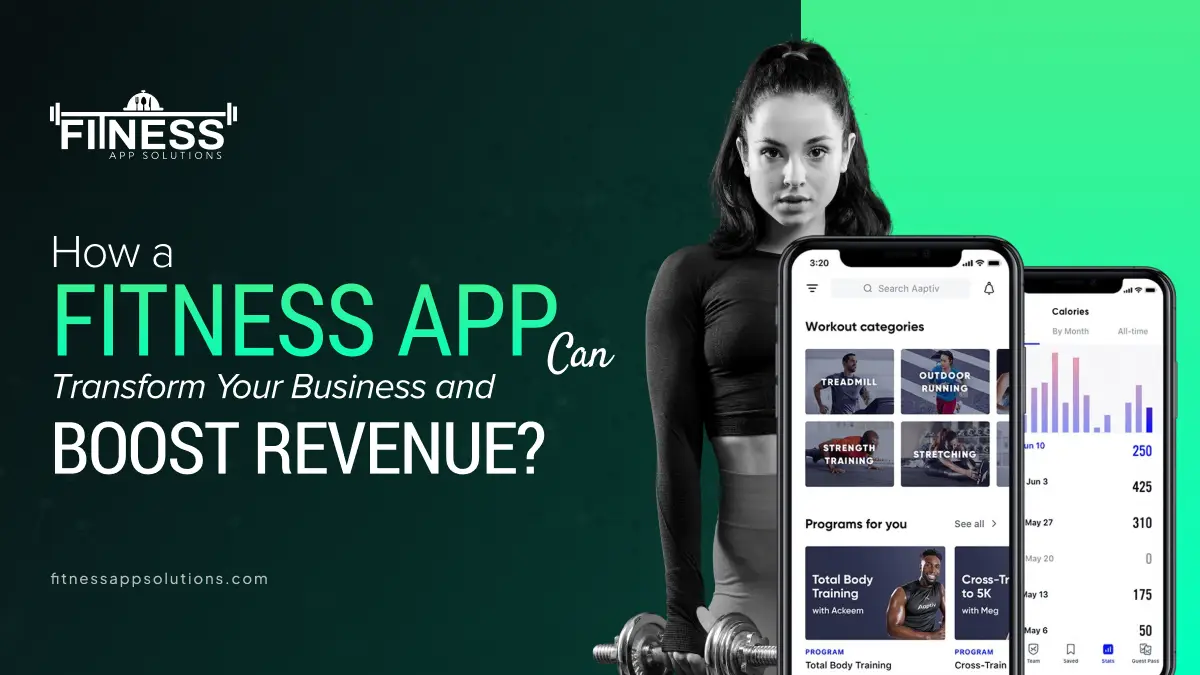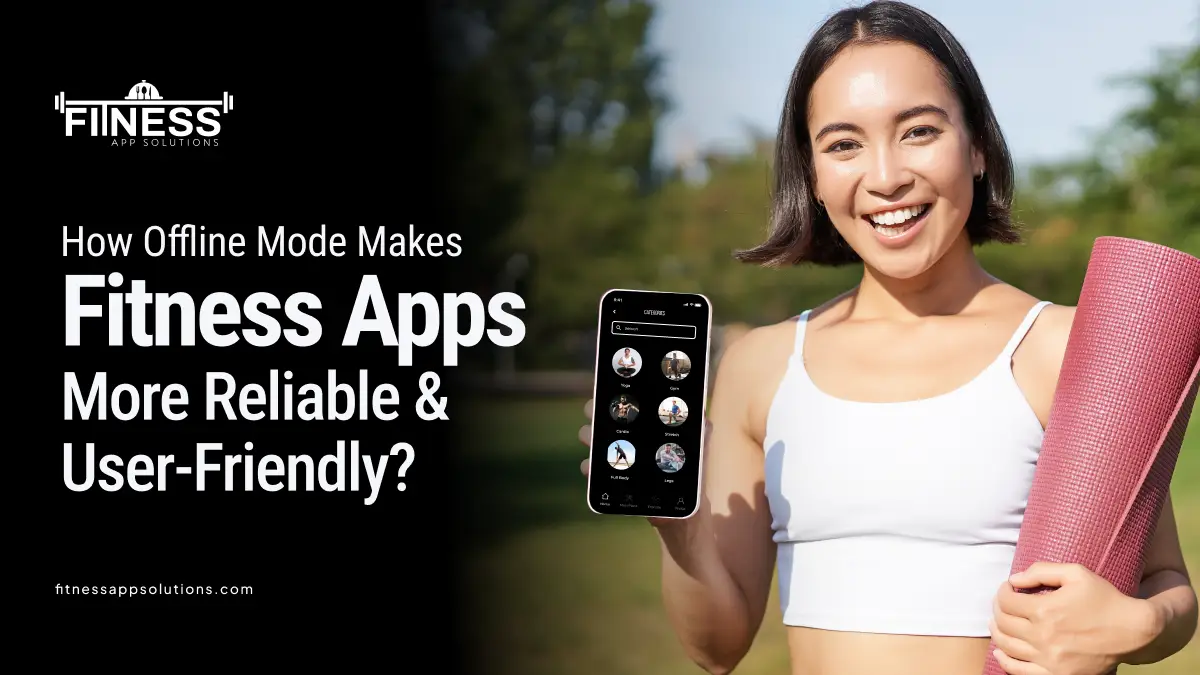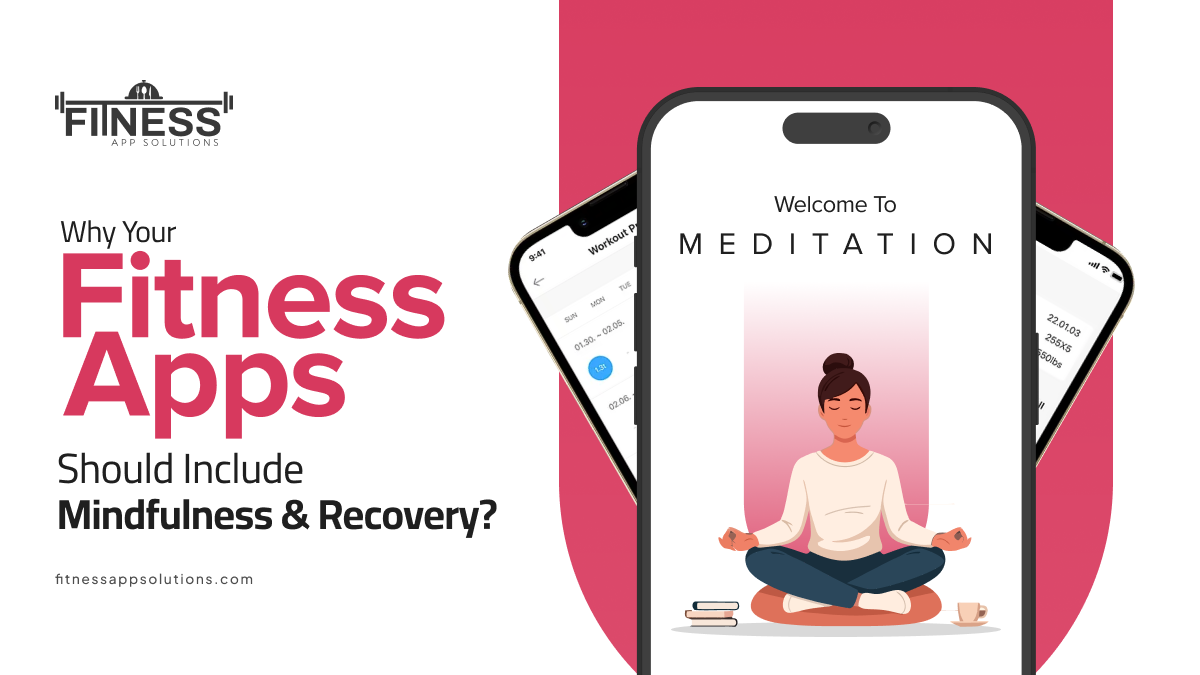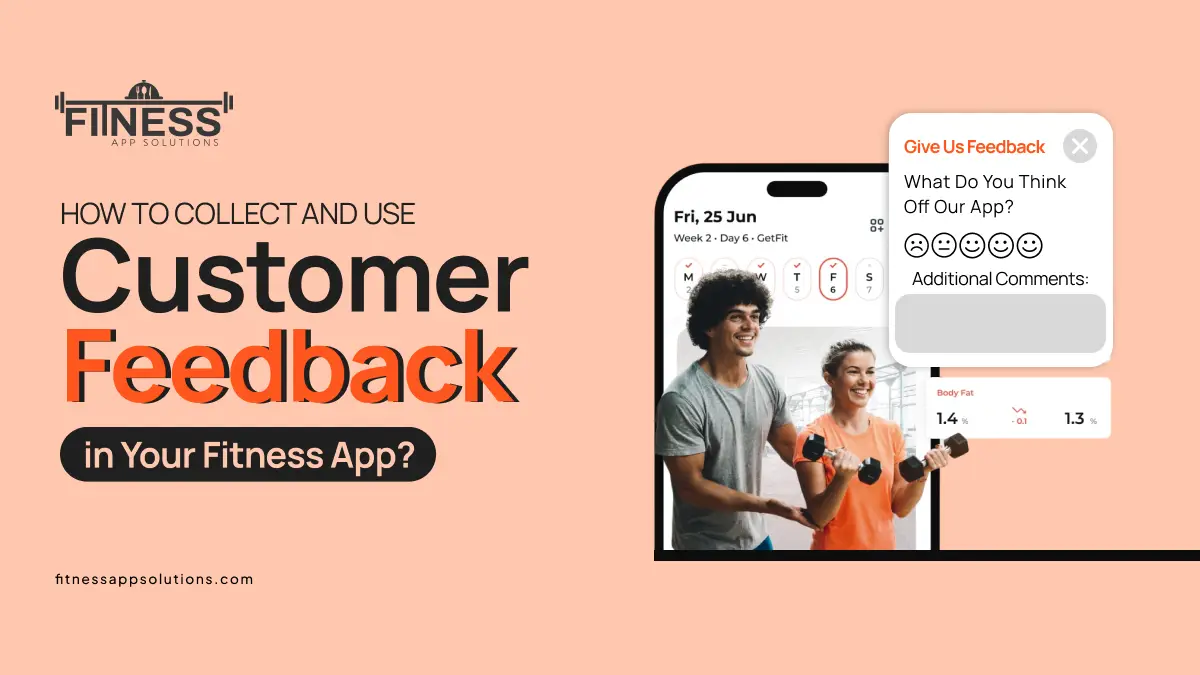Gym businesses are always seeking to differentiate and flourish. Perhaps the best weapon in your arsenal is a fitness app for business growth. It can be used to increase client interaction, simplify operations, and ultimately increase your profits. In this blog, we discuss in detail the many fitness business benefits, implementation strategies, and effective revenue strategies for fitness apps, while addressing some of the most common questions.
How a Fitness App Can Reinvent Your Business and Drive Revenue?
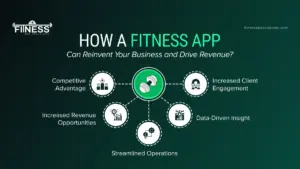
A fitness app can benefit your business because it:
1. Increased Client Engagement
Fitness apps enable you to have more significant relationships with members by providing them with customized, engaging experiences. Customized workouts, tracking progress, and community elements help clients stay motivated and return week after week. Also, increased client engagement results in enhanced fitness app revenue
Personalized Experience:
Fitness apps enable you to provide a custom experience to your customers. With the ability to create customized exercise routines and monitor nutrition, customers can make their fitness experience tailored to their individual needs. Such customization encourages customers to stay motivated and focused.
Real-Time Feedback:
Most fitness apps also give immediate feedback on exercises, enabling clients to see their progress in real time. This instant knowledge keeps clients responsible and challenges them to work even more intensely.
Community Building:
Social aspects are also found in most fitness apps that enable clients to interact with each other. Community is a strong driving force that encourages clients to share their successes, failures, and support one another.
2. Increased Revenue Opportunities
Your app has the potential to be a huge money-maker even without membership fees. With premium content, digital goods, subscriptions and partnerships, you can build several sustainable revenue streams for your business.
Upselling and Cross-Selling:
With a fitness app, it is easy to upsell paid content, including personalized exercise programs or diets. This not only provides more value for your clients but also generates more revenue streams for your company.
Virtual Training:
Selling virtual training sessions from your app can appeal to clients who do not want to visit a gym. This convenience can bring about greater membership and client retention.
Merchandise Sales:
Including merchandise sales within your app enables customers to buy branded equipment or fitness-related products in one place. This added convenience will increase your revenues while increasing your brand visibility.
Subscription Models:
Look at integrating subscription models for premium content, like advanced workout routines, nutrition guidance, or access to a forum. This establishes a consistent source of revenue while offering continuous value to your customers.
Affiliate Marketing:
Collaborate with fitness brands to market their services in your app. You can earn referral fees on sales that are made through your app, generating another stream of revenue without making a huge investment.
Corporate Wellness Programs:
Provide customized fitness solutions to neighborhood companies who want to keep their employees healthy. This can be done through group classes, wellness challenges, and via your app, as a win-win for both companies.
3. Streamlined Operations
Save administrative hassles and gain more time with intelligent automation. Scheduling online, paperless sign-ups, and centralized client control enable you to concentrate on coaching instead of forms.
Automated Scheduling:
Scheduling can be automated using fitness apps, making booking classes or sessions convenient for clients. This saves administrative time and eliminates scheduling clashes.
Digital Waivers and Payments:
This is easier with digital waivers and payment processing when you onboard new clients. That not only saves time but also impacts the overall client experience positively.
Client Management Centralization:
A fitness app can centralize the information of your clients in such a way that managing memberships and tracking progress can easily be done, and communication can be made easily with your clients. This simply means that you will have more time giving excellent service.
Use the app to monitor client performance over time. The data can be used to recognize trends, modify training programs, and offer customized feedback, improving client experience.
Integration with Wearable Devices:
Some of the fitness apps integrate with wearable gadgets such as smartwatches and fitness trackers. This offers clients the ability to sync their information, delivering an overall impression of their health and fitness progress.
4. Data-Driven Insight
Make better business choices with actionable analytics at your fingertips. Monitor everything from class attendance to customer interests to hone your offerings and marketing efforts.
Monitor Client Progress:
Gym apps offer insightful data on client progress, attendance, and participation. This insight can be used to understand trends and make informed business decisions on your offerings.
Marketing Insights:
By monitoring user behavior on the app, you can determine how effective current marketing strategies are and areas for improvement. More effective marketing campaigns can result from data-driven insights.
Retention Strategies:
Client engagement metrics may be used to determine which clients are at risk. Proactively contacting these clients, you can then develop retention strategies to retain them.
Feedback Mechanisms:
Integrate feedback mechanisms into the app to collect client feedback regarding classes, instructors, and satisfaction. This data can be used to make improvements and improve the client experience.
5. Competitive Advantage
A branded app makes your company appear cutting-edge, professional, and client-oriented. It allows you to appeal to technology-savvy members and distinguish yourself from competitors who are still operating with traditional methods
Stand Out in the Market:
In a busy fitness market, a dedicated app can differentiate you from the competition. It indicates that you are forward-thinking and serious about delivering the best experience for your customers.
Acquire Younger Clients:
Younger demographics are digitally savvy and look for digital solutions. A fitness app can engage Millennial and Gen Z clients who value the ease of controlling their fitness process through their mobile phone.
Create Brand Loyalty:
A well-constructed app boosts your brand image and creates loyalty among customers. Whenever customers enjoy a positive experience with your app, they will refer your services to their friends and colleagues.
Feature Success Stories:
Feature client success stories and testimonials using your app. This not only encourages existing clients but also functions as effective marketing content to bring in new members.
Conclusion
Integrating a fitness app into your business strategy can be a turning point as it can help to generate fitness app revenue at fullest. From improving client interaction to automating processes and boosting revenue, the advantages are apparent. If you are keen on remaining relevant in the health and fitness industry, investing in a fitness app is moving in the right direction.
Frequently Asked Questions (FAQs)
What are the features that I need to look for in a fitness app?
Search for functionalities such as customized workout routines, tracking of nutrition, analysis of progress, social networking, and wearable device integration. These capabilities improve client experience and interaction.
How can a fitness app contribute to client retention?
A fitness app maintains clients by providing them with customized experiences, real-time feedback, and social support. By giving them tools to monitor their progress and remain motivated, you can substantially enhance retention rates.
Is it possible to use a fitness app to provide virtual training?
Yes! There are numerous fitness apps that enable you to provide virtual training sessions, and clients can join from home easily. This convenience can appeal to more people and expand membership.
How do I promote my fitness app to clients?
Market your app on social media, email newsletters, and in-gym signage. Emphasize the advantages of the app, like customized workouts and community features, to prompt downloads.
What are the development costs of a fitness app?
Prizes can be extremely varied depending on design, features, and development period. On average, an average fitness app can cost between $10,000 and $100,000. Be mindful of your budget and identify must-have features.
How can I make sure my app stays user-friendly?
Perform user testing and secure feedback from clients throughout the development process. Constantly update the app based on user recommendations to enhance functionality and user experience.
What are the advantages of wearing device integration with my fitness app?
Wearing device integration enables clients to sync their fitness information, giving an overall overview of the health journey. This feature supports more engagement by users and enables clients to monitor progress in a better way.
